Dream11 has already disrupted fantasy sports in India, and now the Dream11 future business model is under the spotlight. With the recent passage of the Promotion and Regulation of Online Gaming Bill, 2025, a new era has begun. The legislation imposes a blanket ban on “online money games” — including skill-based fantasy contests — and introduces heavy penalties on deposits, advertising, and facilitation.
Table of Contents
This legal shift mandates that fantasy platforms like Dream11 adopt a completely new, compliant business model. To remain viable, Dream11 can reimagine its Grand League (GL) contests as an ad-powered, free-to-play ecosystem — not only preserving its growth, but also further energising India’s broader sports fervour.
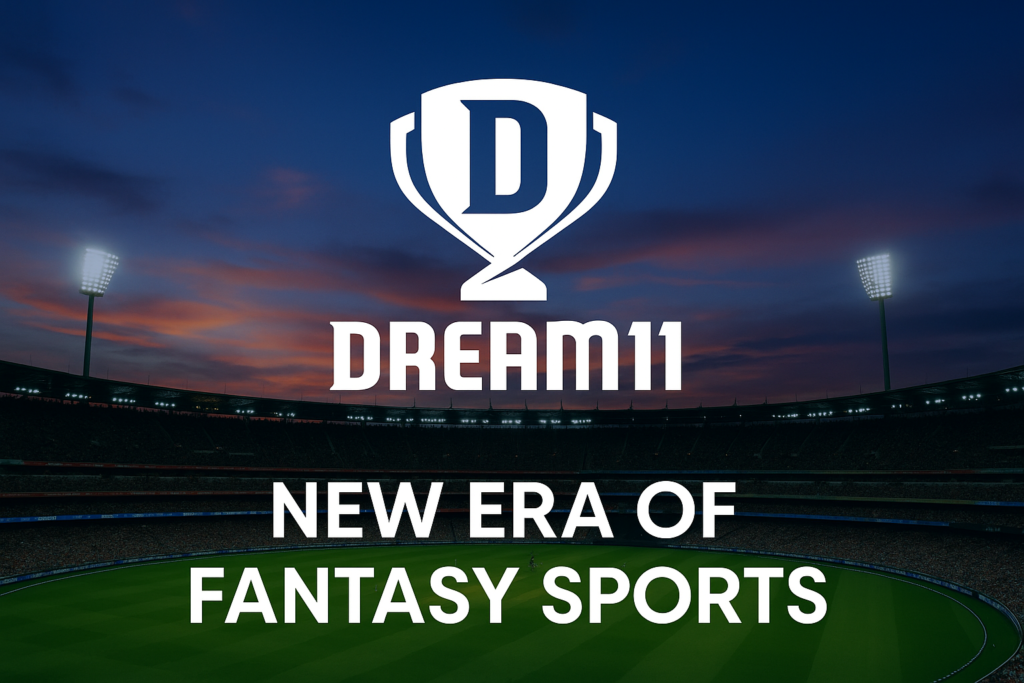
💰 Tax Revenue Impact: Pre-Ban vs Post-Bill (How Dream11 Future Business Model will Help)
Before the ban, India’s exchequer earned tens of thousands of crores annually through GST, corporate income tax, and TDS on winnings from fantasy platforms like Dream11, MPL, and My11Circle.
- Pre-Ban Era (2023–24): Estimated ₹20,000 crore in annual tax revenue was generated from fantasy sports alone.
- Post-Bill Era (2025): With a blanket ban, this revenue stream risks collapsing.
Under the proposed fixed prize pool, free-entry model:
- With 148 contests per IPL season and multiple sports throughout the year, the government can still collect GST on ad spends, corporate income tax on Dream11 profits, and TDS on large winnings.
- This could sustain ₹2,000–2,500 crore annually in tax flows — far better than a near-zero collection under the current ban.
Thus, this model ensures the government doesn’t sacrifice valuable tax income while keeping the ecosystem compliant.
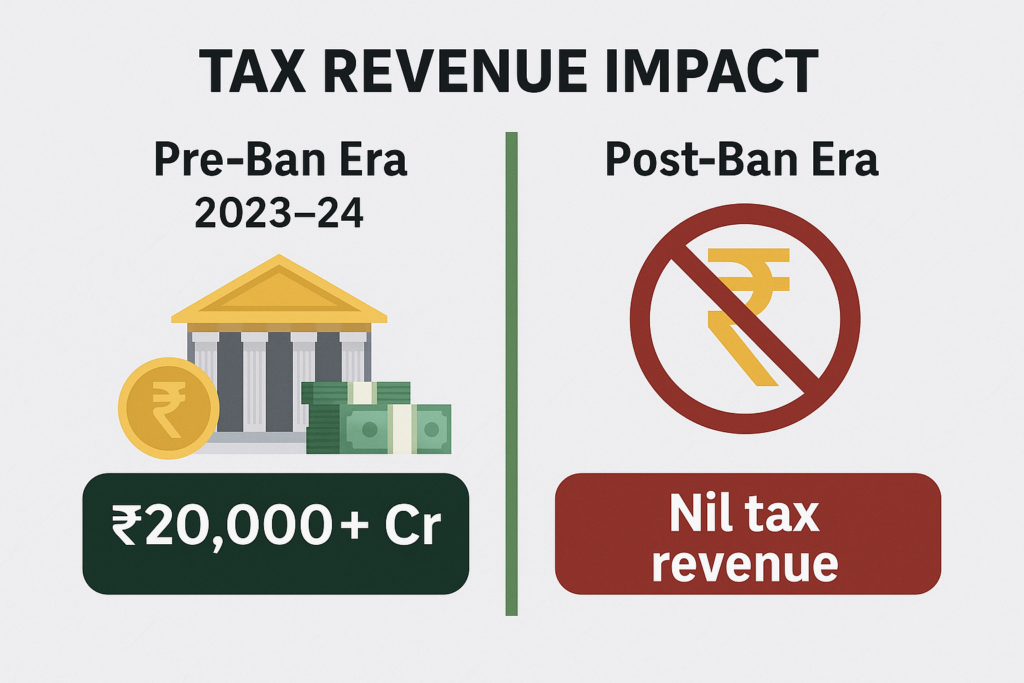
🧑💼 Sustaining Jobs & Industry Stability
Dream11 employs over 800 people directly and supports thousands more indirectly (tech, analytics, sports marketing, media). After the ban, co-founder Harsh Jain admitted the company faced 95% revenue loss and 100% profit wipeoutovernight.
Without a viable model, this could force large-scale layoffs.
By adopting this ad-pass sponsorship ecosystem:
- Dream11 sustains operations and staff.
- Advertiser and broadcaster tie-ins create new jobs in ad-tech, brand partnerships, sports media.
- Ensures “no to minimal job losses” while keeping India a global leader in fantasy gaming innovation.
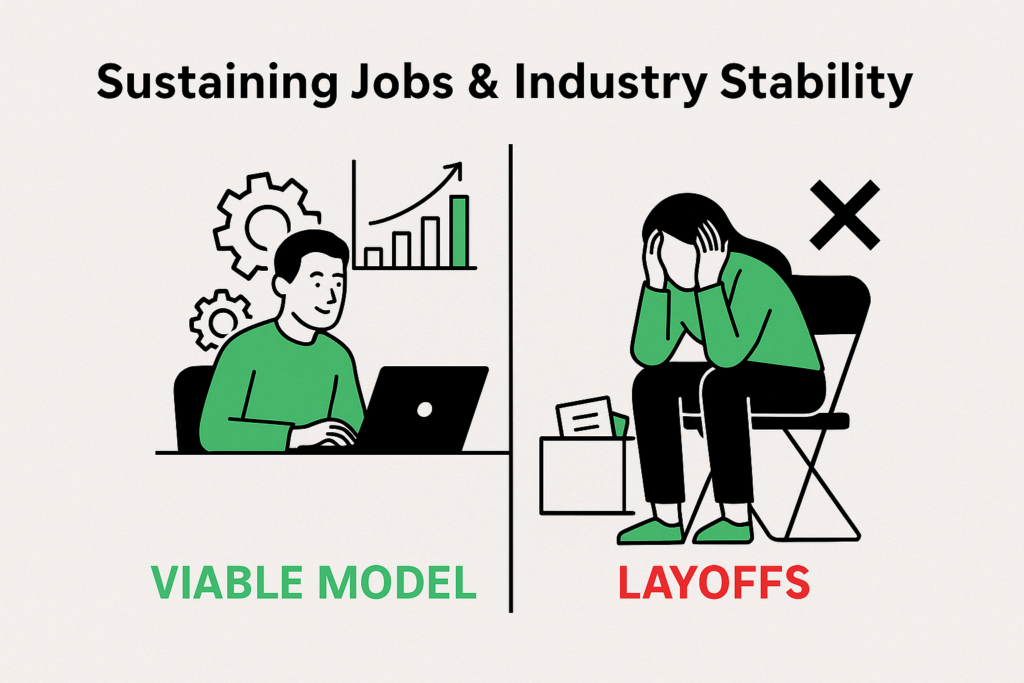
⚖️ Supreme Court Precedent on Skill Games
The Supreme Court of India has consistently upheld fantasy sports as “games of skill,” not gambling (landmark judgments in 2017, 2019, and 2021). Multiple High Courts reinforced this view.
The Promotion and Regulation of Online Gaming Bill, 2025 contradicts these rulings by placing fantasy sports in the same category as games of chance.
👉 The proposed free-entry model avoids this conflict:
- No deposits = no gambling element.
- Rewards tied to skill-based team selection = compliance with Supreme Court doctrine.
- Protects the judiciary’s earlier recognition of fantasy sports as a legitimate industry.
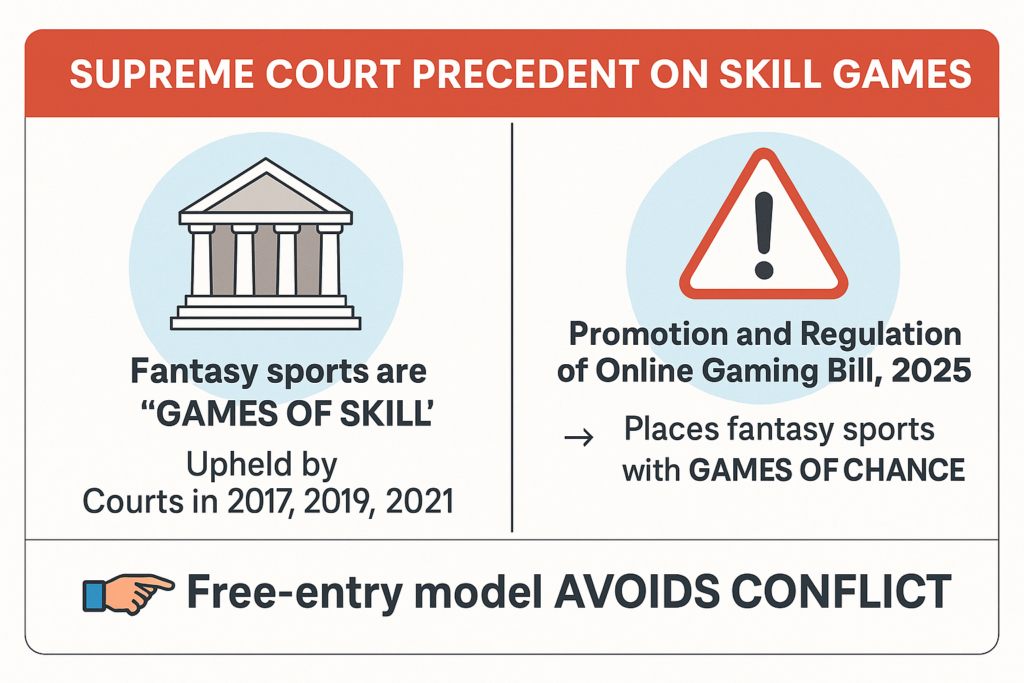
🏛 State Autonomy & Federal Balance
Fantasy sports regulation was historically state subject matter, with states like Nagaland, Sikkim, and Meghalayaissuing licenses for skill games.
The new central bill hijacks state powers, removing their ability to regulate or promote fantasy platforms. This undermines the federal structure and restricts states from developing local sports-tech industries.
👉 The proposed pass-and-ads model restores balance by:
- Ensuring contests are non-deposit, free-to-play, avoiding central ban concerns.
- Giving states flexibility to co-sponsor contests with local leagues (e.g., Tamil Nadu Premier League, Karnataka Premier League).
- Preventing loss of state rights while aligning with national compliance.
🏆 Fixed Prize Pool for Grand League Contests
To simplify operations and conform to new regulatory clarity, Dream11 should consolidate around one year-round flagship GL contest with a fixed prize pool structure, transparent to both users and regulators.
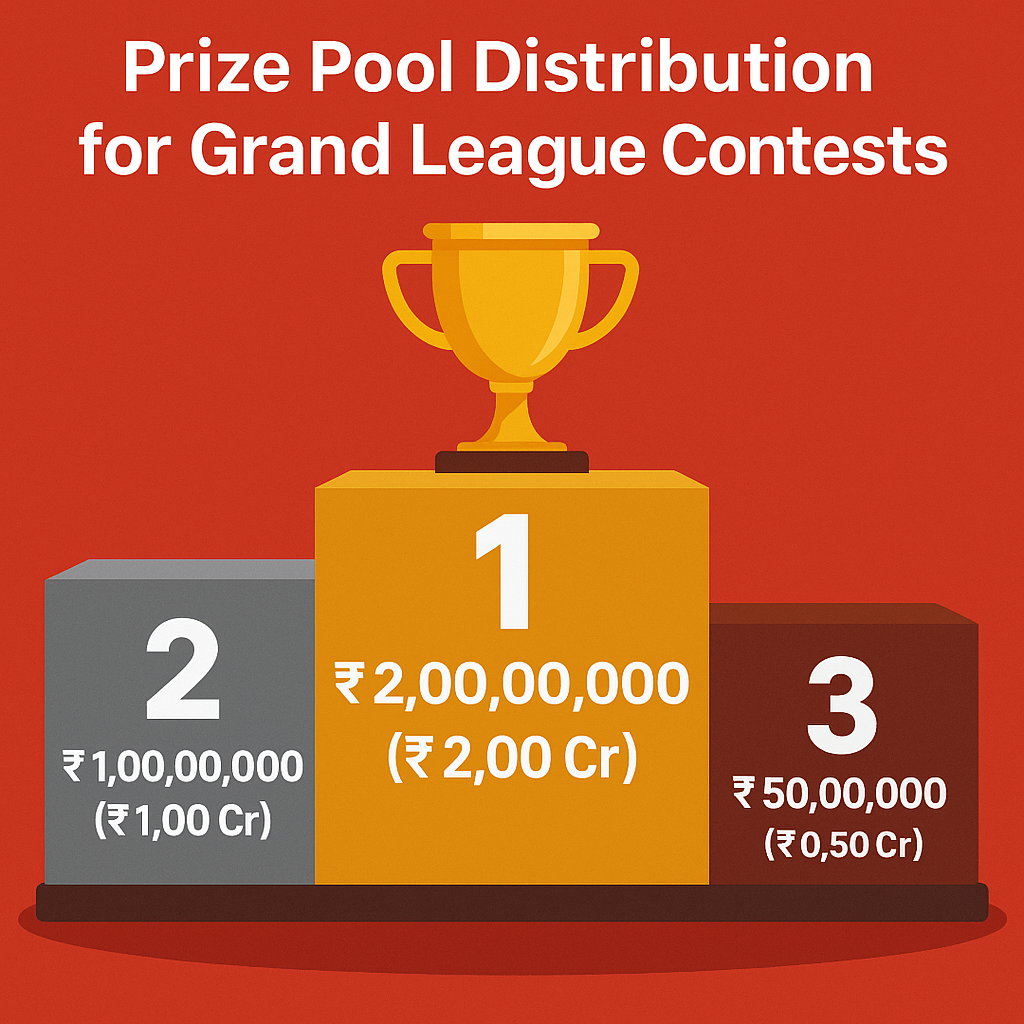
Prize Pool Distribution (₹4.78 Cr per contest)
| Rank | Prize (₹) | Prize (Cr) |
|---|---|---|
| 1 | 2,00,00,000 | 2.00 |
| 2 | 1,00,00,000 | 1.00 |
| 3 | 50,00,000 | 0.50 |
| 4 | 30,00,000 | 0.30 |
| 5 | 20,00,000 | 0.20 |
| 6 | 10,00,000 | 0.10 |
| 7 | 5,00,000 | 0.05 |
| 8 | 3,00,000 | 0.03 |
| 9 | 2,00,000 | 0.02 |
| 10 | 1,00,000 | 0.01 |
| 11–100 | 10,000 each | 0.09 |
| 101–200 | 5,000 each | 0.05 |
| 201–500 | 1,000 each | 0.03 |
| 501–1000 | 500 each | 0.025 |
| 1001–10000 | 250 each | 0.225 |
| 10001–25000 | 100 each | 0.15 |
| Total | — | 4.78 Cr |
🎟 Entry Pass System: Compliant, Incentivized Access
The new bill bans real-money entry, deposits, and facilitation for such games. The solution: replace deposits with Entry Passes that align with legal frameworks.
Pass Types & Earning Routes
| Pass Type | How to Earn | Perks & Compliance Fit |
|---|---|---|
| Standard Pass | Watch 5 ads = 1 Entry Pass | Default, deposit-free entry |
| Sponsor Pass | On-pack codes (e.g., Pepsi bottle scan) | Brand tie-ins, early access |
| Bonus Pass | Quizzes, streaks, surveys | Engagement-building, zero cash |
| Conversion Pass | Convert winnings (₹49 = 1 pass or ₹490 = 10 passes) | Keeps user assets internal |
📌 Pass Accumulation Rules
- Normal Matches (Domestic Leagues, Bilateral Series, Non-ICC Games):
Users can watch ads anytime throughout the year and accumulate entry passes at their own pace (5 ads = 1 pass). These stored passes can be used for any non-major contest. - Major Events (IPL, ICC World Cup, Asia Cup, Champions Trophy):
Passes must be earned during the same month as the tournament. For example:- IPL starts mid-April → only passes earned from April 1 onwards can be used.
- Same rule applies for World Cup, Asia Cup, and Champions Trophy.
This ensures:
- Higher CPMs during marquee tournaments (advertisers pay premium).
- No stockpiling loopholes months in advance.
- Fairness for sponsors, who want peak-time ad visibility.
👉 This flexible system lets casual fans accumulate passes year-round, while protecting premium value during big-ticket tournaments.

📈 CPM Calculations & Profitability
Each contest has 1 crore entries × 5 ads = 50 crore impressions.
Formula:Revenue per contest (₹ Cr) = 0.005 × eCPM
Break-even eCPM: ₹956
Profit Scenarios (Ads-only Model)
| eCPM | Revenue/Contest (₹ Cr) | Profit/Contest (₹ Cr) | Season Profit (148 contests) |
|---|---|---|---|
| 1000 | 5.00 | +0.22 | +32.6 Cr |
| 1500 | 7.50 | +2.72 | +402.6 Cr |
| 2000 | 10.00 | +5.22 | +772.6 Cr |
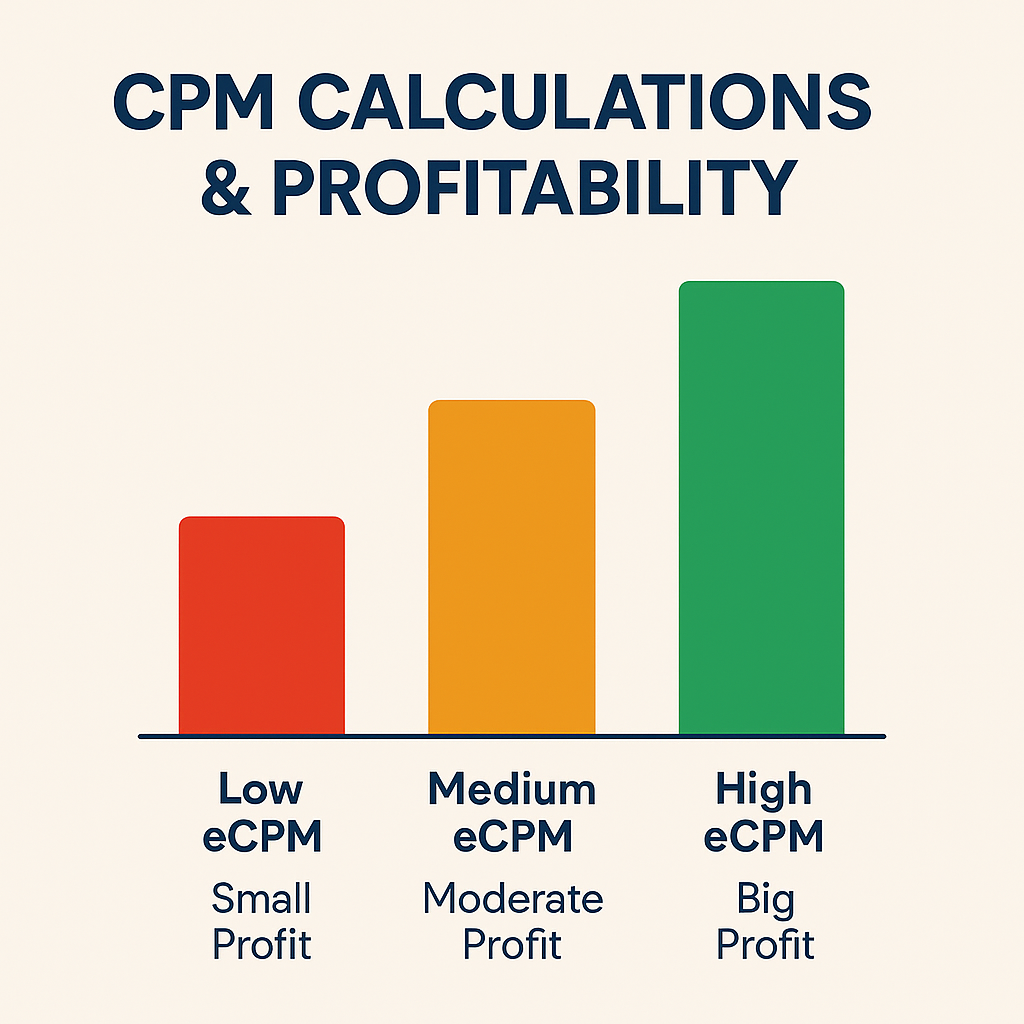
🤝 Sponsorship Boost: Brands & Broadcasters
The Bill prohibits advertisements and facilitation of real-money games, but not responsible sponsorships of compliant pass systems. This opens the door for brands and broadcasters to support prize pools.
📊 Banner Ads Revenue with Multi-Screen Exposure
While building 10 teams per user, participants toggle between team creation, player stats, and contest join screens. Each reload is a new opportunity to serve banner ads.
- Unique Users per contest: 1 Cr entries ÷ 10 = 10 lakh
- Banner Exposures per user: ~5–8 ads
- Total Impressions: 50–80 lakh per contest
Revenue Estimate (Finance Banners, e.g., Binance):
- CPM (₹300–₹600): ₹15–48 lakh
- CPI (20% of clicks at ₹500): ₹50–80 lakh
- CPA (10% of installs at ₹5,000): ₹50–80 lakh
✅ Total banner revenue ≈ ₹1.15–2.1 Cr per contest
💡 Combined Revenue & Profitability
By combining video ads, banner ads, and sponsorships, Dream11 ensures both compliance and profitability.
| Scenario | Video Ads Profit | Banner Ads Profit | Sponsorship (₹2–3 Cr/contest) | Combined Profit/Contest | Combined Profit (IPL 148 contests) |
|---|---|---|---|---|---|
| Low CPM (₹1000) | ₹0.22 Cr | ~₹1.2 Cr | ₹2.0 Cr | ₹3.4 Cr | ₹503 Cr |
| Mid CPM (₹1500) | ₹2.72 Cr | ~₹1.5 Cr | ₹2.0 Cr | ₹6.2 Cr | ₹917 Cr |
| High CPM (₹2000) | ₹5.22 Cr | ~₹2.0 Cr | ₹3.0 Cr | ₹10.2 Cr | ₹1,510 Cr |
✅ With this model, Dream11 not only covers the ₹4.78 Cr prize pool per contest but also generates hundreds to over a thousand crores in profit per IPL season.
Note: The “Video Ads Profit” values (₹0.22 Cr, ₹2.72 Cr, ₹5.22 Cr) are net profits after deducting the entire ₹4.78 Cr prize pool per contest. The Banner Ads and Sponsorship profits shown are additional layers of income on top of this, further strengthening Dream11’s business model.

💡 Winnings Reinvestment — Legal & User-Friendly
With deposit avenues shut by law, Dream11 can offer reinvestment of winnings into entry passes:
- ₹49 = 1 pass
- ₹490 = 10 passes
This qualifies as internal use of winnings and not “monetary deposit,” fitting securely within legal boundaries.
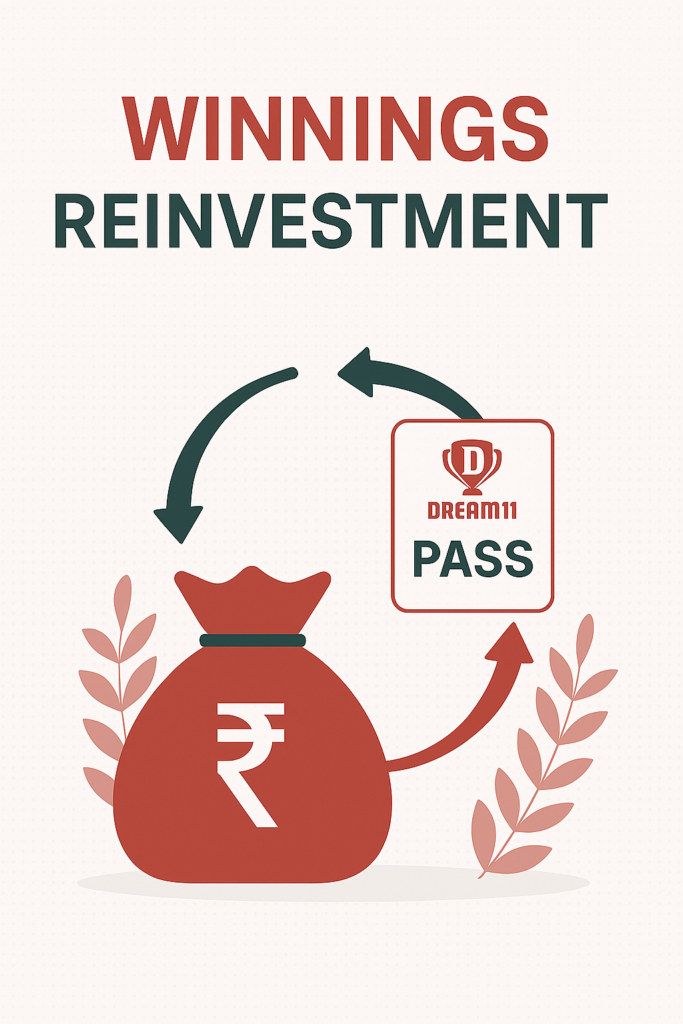
📺 Why Broadcasters Should Support Dream11
Fantasy contests don’t just benefit Dream11 — they benefit the entire sports ecosystem:
- Cricket viewership surged because fantasy users follow every ball.
- Women’s cricket and emerging nations (Afghanistan, Zimbabwe, Ireland) got traction.
- Kabaddi & football (PKL, ISL) gained new life through fantasy engagement.
Without Dream11, domestic leagues and smaller matches risk fading from fan interest. This hurts broadcasters who depend on TRPs.
👉 Therefore, broadcasters (Star Sports, JioCinema, Sony, etc.) should co-sponsor Dream11’s prize pools, since they directly profit from increased ad sales and engagement sparked by fantasy gaming.
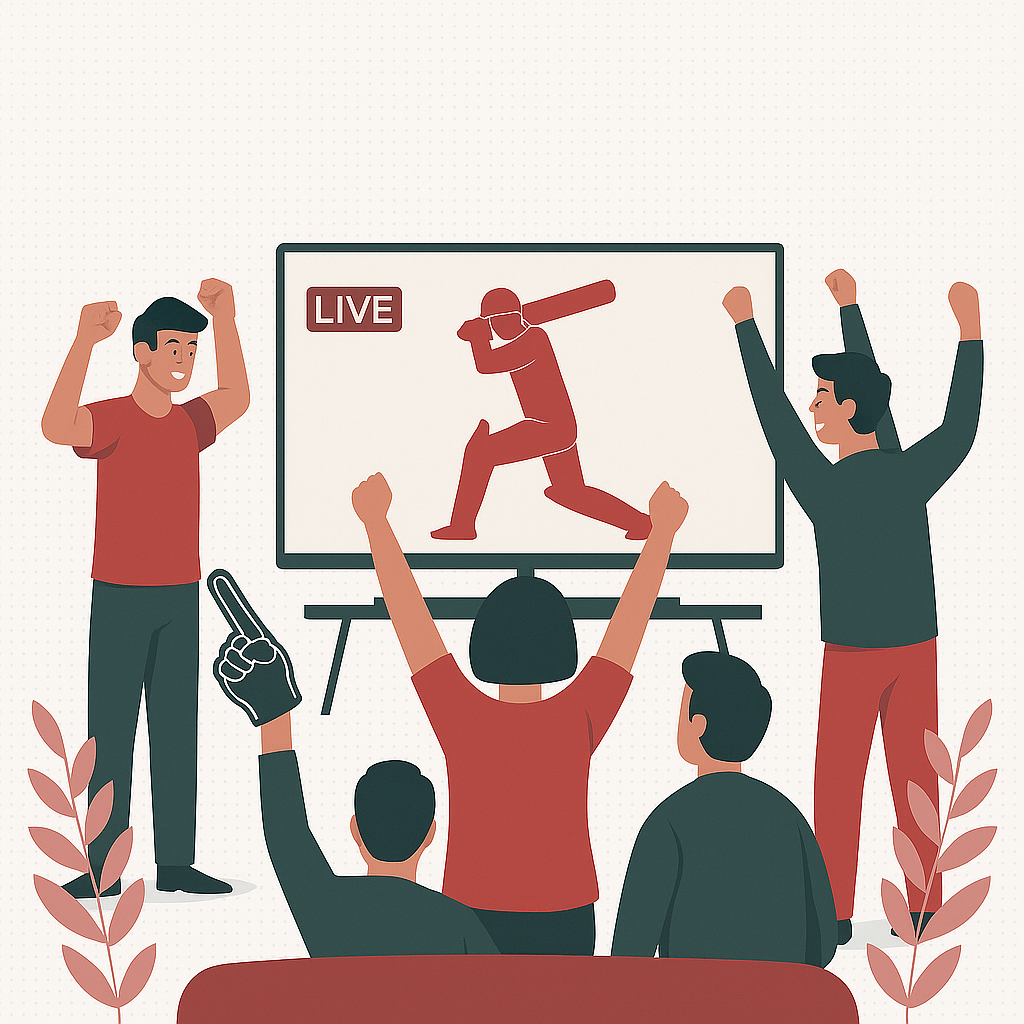
🚀 Conclusion: A Regulation-Aligned Fantasy Ecosystem
The Promotion and Regulation of Online Gaming Bill, 2025 mandates a shift away from real-money-based models. Dream11’s proposed structure—based on ad-driven passes, consistent prize pools, selective sponsorship, and winnings reinvestment—not only meets compliance requirements but also reinforces its leadership in driving India’s sports-viewing revolution.
Crucially, this model:
- Preserves government tax revenues
- Prevents massive job losses
- Aligns with Supreme Court precedents on skill games
- Respects state autonomy in regulating local industries
Dream11 thus becomes not just a fantasy gaming app, but a regulatory-compliant growth engine for Indian sports, media, and employment.
Also read: Promotion and Regulation of Online Gaming Bill 2025: A Balanced Path Forward